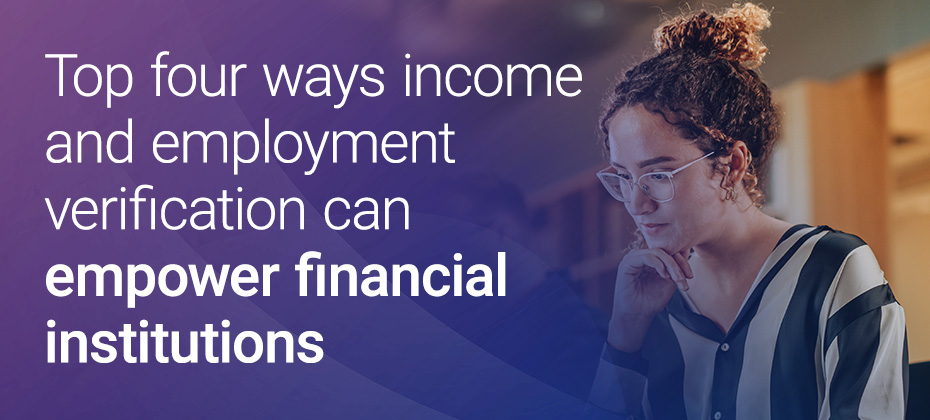Credit Lending

Advances in analytics and modeling are making credit risk decisioning more efficient and precise. And while businesses may face challenges in developing and deploying new credit risk models, machine learning (ML) — a type of artificial intelligence (AI) — is paving the way for shorter design cycles and greater performance lifts. LEARN MORE: Get personalized recommendations on optimizing your decisioning strategy Limitations of traditional lending models Traditional lending models have worked well for years, and many financial institutions continue to rely on legacy models and develop new challenger models the old-fashioned way. This approach has benefits, including the ability to rely on existing internal expertise and the explainability of the models. However, there are limitations as well. Slow reaction times: Building and deploying a traditional credit risk model can take many months. That might be okay during relatively stable economic conditions, but these models may start to underperform if there's a sudden shift in consumer behavior or a world event that impacts people's finances. Fewer data sources: Traditional scoring models may be able to analyze some types of FCRA-regulated data (also called alternative credit data*), such as utility or rent payments, that appear in credit reports. AI credit scoring models could go a step further by incorporating data from additional sources, such as internal data, even if they're designed in a traditional way. They can analyze vast amounts of information and uncover data points that are more highly predictive of risk. Less effective performance: Experian has found that applying machine learning models can increase accuracy and effectiveness, allowing lenders to make better decisions. When applied to credit decisioning, lenders see a Gini uplift of 60 to 70 percent compared to a traditional credit risk model.1 Leveraging machine learning-driven models to segment your universe From initial segmentation to sending right-sized offers, detecting fraud and managing collection efforts, organizations are already using machine learning throughout the customer life cycle. In fact, 79% are prioritizing the adoption of advanced analytics with AI and ML capabilities, while 65% believe that AI and ML provide their organization with a competitive advantage.2 While machine learning approaches to modeling aren't new, advances in computer science and computing power are unlocking new possibilities. Machine learning models can now quickly incorporate your internal data, alternative data, credit bureau data, credit attributes and other scores to give you a more accurate view of a consumer's creditworthiness. By more precisely scoring applicants, you can shrink the population in the middle of your score range, the segment of medium-risk applicants that are difficult to evaluate. You can then lower your high-end cutoff and raise your low-end cutoff, which may allow you to more confidently swap in good accounts (the applicants you turned down with other models that would have been good) and swap out bad accounts (those you would have approved who turned bad). Machine learning models may also be able to use additional types of data to score applicants who don't qualify for a score from traditional models. These applicants aren't necessarily riskier — there simply hasn't been a good way to understand the risk they present. Once you can make an accurate assessment, you can increase your lending universe by including this segment of previously "unscorable" consumers, which can drive revenue growth without additional risk. At the same time, you're helping expand financial inclusion to segments of the population that may otherwise struggle to access credit. READ MORE: Is Financial Inclusion Fueling Business Growth for Lenders? Connecting the model to a decision Even a machine learning model doesn't make decisions. The model estimates the creditworthiness of an applicant so lenders can make better-informed decisions. AI-driven credit decisioning software can take your parameters (such cutoff points) and the model's outputs to automatically approve or deny more applicants. Models that can more accurately segment and score populations will result in fewer applications going to manual review, which can save you money and improve your customers' experiences. CASE STUDY: Atlas Credit, a small-dollar lender, nearly doubled its loan approval rates while decreasing risk losses by up to 20 percent using a machine learning-powered model and increased automation. Concerns around explainability One of the primary concerns lenders have about machine learning models come from so-called “black box" models. Although these models may offer large lifts, you can't verify how they work internally. As a result, lenders can't explain why decisions are made to regulators or consumers — effectively making them unusable. While it's a valid concern, there are machine learning models that don't use a black box approach. The machine learning model doesn't build itself and it's not really “learning" on its own — that's where the black box would come in. Instead, developers can use machine learning techniques to create more efficient models that are explainable, don't have a disparate impact on protected classes and can generate reason codes that help consumers understand the outcomes. LEARN MORE: Explainability: Machine learning and artificial intelligence in credit decisioning Building and using machine learning models Organizations may lack the expertise and IT infrastructure required to develop or deploy machine learning models. But similar to how digital transformations in other parts of the business are leading companies to use outside cloud-based solutions, there are options that don't require in-house data scientists and developers. Experian's expert-guided options can help you create, test and use machine learning models and AI-driven automated decisioning; Ascend Intelligence Services™ Pulse: Monitor, validate and challenge your existing models to ensure you're not missing out on potential improvements. The service includes a model health index and alerts, performance summary, automatic validations and stress-testing results. It can also automatically build challenger models and share the estimated lift and financial benefit of deployment. PowerCurve® Originations: Cloud-based decision engine software that you can use to make automated decisions that are tailored to your goals and needs. A machine learning approach to credit risk and AI-driven decisioning can help improve outcomes for borrowers and increase financial inclusion while reducing your overall costs. With a trusted and experienced partner, you'll also be able to back up your decisions with customizable and regulatorily-compliant reports. Learn more about our credit decisioning solutions. Learn more When we refer to "Alternative Credit Data," this refers to the use of alternative data and its appropriate use in consumer credit lending decisions as regulated by the Fair Credit Reporting Act (FCRA). Hence, the term "Expanded FCRA Data" may also apply in this instance and both can be used interchangeably.

There's always a risk that a borrower will miss or completely stop making payments. And when lending is your business, quantifying that credit risk is imperative. However, your credit risk analysts need the right tools and resources to perform at the highest level, which is why it is important to understand the latest developments in credit risk analytics and find the right partner. What is credit risk analytics? Credit risk analytics help turn historical and forecast data into actionable analytical insights, enabling financial institutions to assess risk and make lending and account management decisions. One way organizations do this is by incorporating credit risk modeling into their decisions. Credit risk modeling Financial institutions can use credit risk modeling tools in different ways. They might use one credit risk model, also called a scorecard, to assess credit risk (the likelihood that you won't be repaid) at the time of application. Its output helps you determine whether to approve or deny an application and set the terms of approved accounts. Later in the customer lifecycle, a behavior scorecard might help you understand the risk in your portfolio, adjust credit lines and identify up- or cross-selling opportunities. Risk modeling can also go beyond individual account management to help drive high-level portfolio and strategic decisions. However, managing risk models is an ongoing task. As market conditions and business goals change, monitoring, testing and recalibrating your models is important for accurately assessing credit risk. Credit scoring models Application credit scoring models are one of the most popular applications for credit risk modeling. Designed to predict the probability of default (PD) when making lending decisions, conventional credit risk scoring models focus on the likelihood that a borrower will become 90 days past due (DPD) on a credit obligation in the following 24 months. These risk scores are traditionally logistic regression models built on historical credit bureau data. They often have a 300 to 850 scoring range, and they rank-order consumers so people with higher scores are less likely to go 90 DPD than those with lower scores. However, credit risk models can have different score ranges and be developed to predict different outcomes over varying horizons, such as 60 DPD in the next 12 months. In addition to the conventional credit risk scores, organizations can use in-house and custom credit risk models that incorporate additional data points to better predict PD for their target market. However, they need to have the resources to manage the entire development and deployment or find an experienced partner who can help. The latest trends in credit risk scoring Organizations have used statistical and mathematical tools to measure risk and predict outcomes for decades. But the future of credit underwriting is playing out as big data meets advanced data analytics and increased computing power. Some of the recent trends that we see are: Machine learning credit risk models: Machine learning (ML) is a type of artificial intelligence (AI) that's proven to be especially helpful in evaluating credit risk. According to Experian research, 62% of businesses believe that AI and ML are already radically changing the way they do business.1 Expanding data sources: The ML models' performance lift is due, in part, to their ability to incorporate internal and alternative credit data, such as credit data from alternative financial services, rental payments and Buy Now Pay Later loans. Cognitively countering bias: Lenders have a regulatory and moral imperative to remove biases from their lending decisions. They need to beware of how biased training data could influence their credit risk models (ML or otherwise) and monitor the outcomes for unintentionally discriminatory results. This is also why lenders need to be certain that their ML-driven models are fully explainable — there are no black boxes. A focus on agility: The pandemic highlighted the need for credit risk models and systems that can quickly adjust to account for unexpected world events and changes in consumer behavior. Real-time analytical insights can increase accuracy during these transitory periods. Financial institutions that can efficiently incorporate the latest developments in credit risk analytics have a lot to gain. For instance, a digital-first lending platform coupled with ML models allows lenders to increasingly automate loan underwriting, which can help them manage rising loan volumes, improve customer satisfaction and free up resources for other growth opportunities. Why does getting credit risk right matter? Getting credit risk right is at the heart of what lenders do and accurately predicting the likelihood that a borrower won't repay a loan is the starting point. From there, you can look for ways to more accurately score a wider population of consumers, and focus on how to automate and efficiently scale your system. Credit risk analysis also goes beyond simply using the output from a scoring model. Organizations must make lending decisions within the constraints of their internal resources, goals and policies, as well as the external regulatory requirements and market conditions. Analytics and modeling are essential tools, but as credit analysts will tell you, there's also an art to the practice. How we help clients With decades of experience in credit risk analytics and data management, Experian offers a variety of products and services for financial services firms. Ascend Intelligence Services™ is an award-winning, end-to-end suite of analytics solutions. At a high level, the offering set can rapidly develop new credit risk models, seamlessly deploy them into production, and optimize decisioning strategies. It also has the capability to continuously monitor and retrain models to improve performance over time. For organizations that have the experience and resources to develop new credit risk models on their own, Experian can give you access to data and expertise to help guide and improve the process. But there are also off-the-shelf options for organizations that want to quickly benefit from the latest developments in credit risk modeling. Learn more 1Experian's Guide to ML Model Development (2023).

This article was updated on February 21, 2024. With the rise of technology and data analytics in the financial industry today, it's no longer enough for companies to rely solely on traditional marketing methods. Data-driven marketing insights provide a more sophisticated and comprehensive view of shifting customer preferences and behaviors. With this in mind, this blog post will highlight the importance of data-driven marketing insights, particularly for financial institutions. The importance of data-driven marketing insights 30% of companies say poor data quality is a key challenge to delivering excellent customer experiences. Today’s consumers want personalized experiences built around their individual needs and preferences. Data-driven marketing insights can help marketers meet this demand, but only if it is fresh and accurate. When extending firm credit offers to consumers, lenders must ensure they reach individuals who are both creditworthy and likely to respond. Additionally, their message must be relevant and delivered at the right time and place. Without comprehensive data insights, it can be difficult to gauge whether a consumer is in the market for credit or determine how to best approach them. READ: Case study: Deliver timely and personalized credit offers The benefits of data-driven marketing insights By drawing data-driven marketing insights, you can reach and engage the best customers for your business. This means: Better understanding current and potential customers To increase response and conversion rates, organizations must identify high-propensity consumers and create personalized messaging that resonates. By leveraging customer data that is valid, fresh, and regularly updated, you’ll gain deeper insights into who your customers are, what they’re looking for and how to effectively communicate with them. Additionally, you can analyze the performance of your campaigns and better predict future behaviors. Utilizing technology to manage your customer data With different sources of information, it’s imperative to consolidate and optimize your data to create a single customer view. Using a data-driven technology platform, you can break down data silos by collecting and connecting consumer information across multiple sources and platforms. This way, you can make data available and accessible when and where needed while providing consumers with a cohesive experience across channels and devices. Monitoring the accuracy of your data over time Data is constantly changing, so implementing processes to effectively monitor and control quality over time is crucial. This means leveraging data quality tools that perform regular data cleanses, spot incomplete or duplicated data, and address common data errors. By monitoring the accuracy of your data over time, you can make confident decisions and improve the customer experience. Turning insights into action With data-driven marketing insights, you can level up your campaigns to find the best customers while decreasing time and dollars wasted on unqualified prospects. Visit us to learn more about how data-driven insights can power your marketing initiatives. Learn more Enhance your marketing strategies today This article includes content created by an AI language model and is intended to provide general information.

Developing machine learning (ML) credit risk models can be more challenging than traditional credit risk modeling approaches. But once deployed, ML models can increase automation and expand a lender’s credit universe. For example, by using ML-driven credit risk models and combining traditional credit data with transactional bank data, a type of alternative credit data* , some lenders see a Gini uplift of 60 to 70 percent compared to a traditional credit risk model.1 New approaches to model operations are also helping lenders accelerate their machine learning model development processes and go from collecting data to deploying a new model in days instead of months. READ MORE: Getting AI-driven decisioning right in financial services What is machine learning model development? Machine learning model development is what happens before the model gets deployed. It's often broken down into several steps. Define the problem: If you’re building an ML credit risk model, the problem you may be trying to solve is anticipating defaults, improving affordability for borrowers or expanding your lending universe by scoring more thin-file and previously unscorable consumers. Gather, clean and stage data: Identify helpful data sources, such as internal, credit bureau and alternative credit data. The data will then need to be consolidated, structured, labeled and categorized. Machine learning can be useful here as well, as ML models can be trained to label and categorize raw data. Feature engineering: The data is then analyzed to identify the individual variables and clusters of variables that may offer the most lift. Features that may directly or unintentionally create bias should be removed or limited. Create the model: Deciding which algorithms and techniques to use when developing a model can be part art and part science. Because lenders need to be able to explain the decisions they make to consumers and regulators, many lenders build model explainability into new ML-driven credit risk models. Validate and deploy: New models are validated and rigorously tested, often as challengers to the existing champion model. If the new model can consistently outperform, it may move on to production. The work doesn’t stop once a model is live — it needs to be continuously monitored for drift, and potentially recalibrated or replaced with a new model. About 10 percent of lenders use tools to automatically alert them when their models start to drift. But around half make a point of checking deployed models for drift every month or quarter.3 READ MORE: Journey of an ML Model What is model deployment? Model deployment is one of the final steps in the model lifecycle — it’s when you move the model from development and validation to live production. New models can be deployed in various ways, including via API integration and cloud service deployment using public, private or hybrid architecture. However, integrating a new model with existing systems can be challenging. About a third (33 percent) of consumer lending organizations surveyed in 2023 said it took them one to two months for model deployment-related activities. A little less (29 percent) said it took them three to six months. Overall, it often takes up to 15 months for the entire development to deployment process — and 55 percent of lenders report building models that never get deployed.2 READ MORE: Accelerating the Model Development and Deployment Lifecycle Benefits of deploying machine learning credit risk models Developing, deploying, monitoring and recalibrating ML models can be difficult and costly. But financial institutions have a lot to gain from embracing the future of underwriting. Improve credit risk assessment: ML-driven models can incorporate more data sources and more precisely assess credit risk to help lenders price credit offers and decrease charge-offs. Expand automation: More precise scoring can also increase automation by reducing how many applications need to go to manual review. Increase financial inclusion: ML-models may be able to evaluate consumers who don’t have recent credit information or thick enough credit files to be scorable by traditional models. In short, ML models can help lenders make better loan offers to more people while taking on less risk and using fewer internal resources to review applications. CASE STUDY: Atlas Credit, a small-dollar lender, partnered with Experian® to develop a fully explainable machine learning credit risk model that incorporated internal data, trended data, alternative financial services data and Experian’s attributes. Atlas Credit can use the new model to make instant decisions and is expected to double its approvals while decreasing losses by up to 20 percent. How we can help Experian offers many machine learning solutions for different industries and use cases via the Experian Ascend Technology Platform™. For example, with Ascend ML Builder™, lenders can access an on-demand development environment that can increase model velocity — the time it takes to complete a new model’s lifecycle. You can configure Ascend ML Builder based on the compute you allocate and your use cases, and the included code templates (called Accelerators) can help with data wrangling, analysis and modeling. There’s also Ascend Ops™, a cloud-based model operations solution. You can use Ascend Ops to register, test and deploy custom features and models. Automated model monitoring and management can also help you track feature and model data drift and model performance to improve models in production. Learn more about our machine learning and model deployment solutions *When we refer to “Alternative Credit Data,” this refers to the use of alternative data and its appropriate use in consumer credit lending decisions, as regulated by the Fair Credit Reporting Act. Hence, the term “Expanded FCRA Data” may also apply and can be used interchangeably. 1. Experian (2023). Raising the AI Bar 2. Experian (2023). Accelerating Model Velocity in Financial Institutions 3. Ibid.

As a community bank or credit union, your goal is to provide personalized care and attention to your customers and members while effectively managing regulatory requirements and operational efficiency. By incorporating tools such as income and employment verification, you can streamline the approval process for both account holders and prospects. With the ability to validate their information in seconds, you'll be able to make well-informed decisions faster and accelerate conversion. In this blog post, we will explore the empowering impact of income and employment verification on financial institutions. Better Data, Better Decisions Choosing a verification partner with an instant employer payroll network allows financial institutions to access reliable and up-to-date income and employment information for confident decision-making. With accurate and timely data at their fingertips, you can gain a deeper understanding of your account holders’ capacity to pay, a critical component to assessing overall financial health. This not only helps mitigate risk but also helps you serve your customers and members more effectively. There are additional benefits to partnering with a verification solution provider that is also a Credit Reporting Agency (CRA) offering FCRA-compliant technologies. These organizations are well versed in compliance matters and can help you more effectively mitigate risk. Streamline Approval Times and Remove Friction When developing your verification process, it is advantageous to adopt a waterfall or multi-step approach that encompasses instant verification, permissioned verification, and, as a last resort, manual verification. This tiered approach will significantly reduce approval times, manage costs effectively, and streamline the approval process. Instant verification relies on advanced technology to provide swift and efficient results. In cases where instant verification is unavailable, the process seamlessly transitions to permissioned verification, where explicit consent is obtained from individuals to access their payroll data directly from their respective providers. Lastly, manual verification involves collecting payroll and employment documents, which is a more time-consuming and costly process. By implementing this comprehensive approach, you can enhance the efficiency and effectiveness of your verification process while maintaining the integrity of the results. A Flexible Solution Community banks and credit unions are integral to the lending industry. It is crucial for them to select a versatile verification solution that can keep pace with the approval speed of both regional and large banks. Given that community banks and credit unions operate in smaller geographic regions compared to larger institutions, it is imperative for them to have a verification solution that is versatile and can be applied across their entire spectrum of loan offerings, including mortgage loans, automotive loans, credit cards, home equity loans, and consumer loans. This adaptability enables community banks and credit unions to consistently serve their account holders and enhances their ability to compete effectively with larger financial institutions. With a robust verification solution in place, community banks and credit unions can confidently navigate the complexities of the lending landscape and deliver exceptional results for their valued account holders. World-Class Service and Support To ensure a seamless verification journey, community banks and credit unions should choose a solution provider that delivers exceptional service and support. From the initial onboarding process and comprehensive training to ongoing troubleshooting and guidance, a dedicated and knowledgeable support team becomes indispensable in establishing a successful verification process. Having hands-on training and support not only instills peace of mind but also empowers community-focused financial institutions to consistently provide a high level of personalized service, fostering trust and loyalty among their customers and members. By investing in a robust support system, community banks and credit unions can confidently navigate the verification landscape and stay ahead in an ever-evolving financial industry, reinforcing their commitment to delivering an outstanding experience to their communities. As a longstanding leader in the financial industry, Experian understands the unique challenges faced by community banks and credit unions. Our verification solution, Experian VerifyTM, provides accurate, efficient, and compliant income and employment verification services. With Experian Verify, community focused financial institutions can navigate the complexities of income and employment verification with ease, achieving new levels of efficiency and success. To learn more about how Experian Verify can benefit your bank or credit union, we invite you to visit our website and schedule a personalized demo. Together, let's unlock the potential of income and employment verification and elevate your financial institution to new heights of success. Learn more

This article was updated on February 13, 2024. Traditional credit data has long been a reliable source for measuring consumers' creditworthiness. While that's not changing, new types of alternative credit data are giving lenders a more complete picture of consumers' financial health. With supplemental data, lenders can better serve a wider variety of consumers and increase financial access and opportunities in their communities. What is alternative credit data? Alternative credit data, also known as expanded FCRA-regulated data, is data that can help you evaluate creditworthiness but isn't included in traditional credit reports.1 To comply with the Fair Credit Reporting Act (FCRA), alternative credit data must be displayable, disputable and correctable. Lenders are increasingly turning to new types and sources of data as the use of alternative credit data becomes the norm in underwriting. Today, lenders commonly use one or more of the following: Alternative financial services data: Alternative financial services (AFS) credit data can include information on consumers' use of small-dollar installment loans, single-payment loans, point-of-sale financing, auto title loans and rent-to-own agreements. Consumer permission data: With a consumer's permission, you can get transactional and account-level data from financial accounts to better assess income, assets and cash flow. The access can also give insight into payment history on non-traditional accounts, such as utilities, cell phone and streaming services. Rental payment history: Property managers, electronic rent payment services and rent collection companies can share information on consumers' rent payment history and lease terms. Full-file public records: Local- and state-level public records can tell you about a consumer's professional and occupational licenses, education, property deeds and address history. Buy Now Pay Later (BNPL) data: BNPL tradeline and account data can show you payment and return histories, along with upcoming scheduled payments. It may become even more important as consumers increasingly use this new type of point-of-sale financing. By gathering more information, you can get a deeper understanding of consumers' creditworthiness and expand your lending universe. From market segmentation to fraud prevention and collections, you can also use alternative credit data throughout the customer lifecycle. READ: 2023 State of Alternative Credit Data Report Challenges in underwriting today While unemployment rates are down, high inflation, rising interest rates and uncertainty about the economy are impacting consumer sentiment and the lending environment.2 Additionally, lenders may need to shift their underwriting approaches as pandemic-related assistance programs and loan accommodations end. Lenders may want to tighten their credit criteria. But, at the same time, consumers are becoming accustomed to streamlined application processes and responses. A slow manual review could lead to losing customers. Alternative credit data can help you more accurately assess consumers' creditworthiness, which may make it easier to identify high-risk applicants and find the hidden gems within medium-risk segments. Layering traditional and alternative credit data with the latest approaches to model building, such as using artificial intelligence, can also help you implement precise and predictive underwriting strategies. Benefits of using alternative data for credit underwriting Using alternative data for credit underwriting — along with custom credit attributes and automation — is the modern approach to a risk-based credit approval strategy. The result can offer: A greater view of consumer creditworthiness: Personal cash flow data and a consumer's history of making (or missing) payments that don't appear on traditional credit reports can give you a better understanding of their financial position. Improve speed and accuracy of credit decisions: The expanded view helps you create a more efficient underwriting process. Automated underwriting tools can incorporate alternative credit data and attributes with meaningful results. One lender, Atlas Credit, worked with Experian to create a custom model that incorporated alternative credit data and nearly doubled its approvals while reducing risk by 15 to 20 percent.3 Increase financial inclusion: There are 28 million American adults who don't have a mainstream credit file and 21 million who aren't scoreable by conventional scoring models.4 With alternative credit data, you may be able to more accurately assess the creditworthiness of adults who would otherwise be deemed thin file or unscorable. Broadening your pool of applications while appropriately managing risk is a measurable success. What Experian builds and offers Experian is continually expanding access to expanded FCRA-regulated data. Our Experian RentBureau and Clarity Services (the leading source of alternative financial credit data) have long given lenders a more complete picture of consumers' financial situation. Experian also helps lenders effectively use these new types of data. You can also incorporate the data into your proprietary marketing, lending and collections strategies. Experian is also using alternative credit data for credit scoring. The Lift Premium™ model can score 96 percent of U.S. adults — compared to the 81 percent that conventional models can score using traditional data.5 The bottom line Lenders have been testing and using alternative credit data for years, but its use in underwriting may become even more important as they need to respond to changing consumer expectations and economic uncertainty. Experian is supporting this innovation by expanding access to alternative data sources and helping lenders understand how to best use and implement alternative credit data in their lending strategies. Learn more 1When we refer to “Alternative Credit Data," this refers to the use of alternative data and its appropriate use in consumer credit lending decisions, as regulated by the Fair Credit Reporting Act. Hence, the term “Expanded FCRA Data" may also apply and can be used interchangeably. 2Experian (2024). State of the Economy Report 3Experian (2020). OneAZ Credit Union [Case Study] 4Oliver Wyman (2022). Financial Inclusion and Access to Credit [White Paper] 5Ibid.

This article was updated on February 12, 2024. The Buy Now, Pay Later (BNPL) space has grown massively over the last few years. But with rapid growth comes an increased risk of fraud, making "Buy Now, Pay Never" a crucial fraud threat to watch out for in 2024 and beyond. What is BNPL? BNPL, a type of short-term financing, has been around for decades in different forms. It's attractive to consumers because it offers the option to split up a specific purchase into installments rather than paying the full total upfront. The modern form of BNPL typically offers four installments, with the first payment at the time of purchase, as well as 0% APR and no hidden fees. According to an Experian survey, consumers cited managing spending (34%), convenience (31%), and avoiding interest payments (23%) as main reasons for choosing BNPL. Participating retailers generally offer BNPL at point-of-sale, making it easy for customers to opt-in and get instantly approved. The customer then makes a down payment and pays off the installments from their preferred account. BNPL is on the rise The fintech and online-payment-driven world is seeing a rise in the popularity of BNPL. According to Experian research, 3 in 4 consumers have used BNPL in 2023, with 11% using BNPL weekly to make purchases. The interest in BNPL also spans generations — 36% of Gen Z, 43% of Millennials, 32% of Gen X, and 12% of Baby Boomers have used this payment method. The risks of BNPL While BNPL is a convenient, easy way for consumers to plan for their purchases, experts warn that with lax checkout and identity verification processes it is a target for digital fraud. Experian predicts an uptick in three primary risks for BNPL providers and their customers: identity theft, first-party fraud, and synthetic identity fraud. WATCH: Fraud and Identity Challenges for Fintechs Victims of identity theft can be hit with charges from BNPL providers for products they have never purchased. First-party and synthetic identity risks will emerge as a shopper's buying power grows and the temptation to abandon repayment increases. Fraudsters may use their own or fabricated identities to make purchases with no intent to repay. This leaves the BNPL provider at the risk of unrecoverable monetary losses and can impact the business' risk tolerance, causing them to narrow their lending band and miss out on properly verified consumers. An additional risk lies with fraudsters who may leverage account takeover to gain access to a legitimate user's account and payment information to make unauthorized purchases. READ: Payment Fraud Detection and Prevention: What You Need to Know Mitigating BNPL risks Luckily, there are predictive credit, identity verification, and fraud prevention tools available to help businesses minimize the risks associated with BNPL. Paired with the right data, these tools can give businesses a comprehensive view of consumer payments, including the number of outstanding BNPL loans, total BNPL loan amounts, and BNPL payment status, as well as helping to detect and apply the relevant treatment to different types of fraud. By accurately identifying customers and assessing risk in real-time, businesses can make confident lending and fraud prevention decisions. To learn more about how Experian is enabling the protection of consumer credit scores, better risk assessments, and more inclusive lending, visit us or request a call. And keep an eye out for additional in-depth explorations of our Future of Fraud Forecast. Learn more Future of Fraud Forecast

This article was updated on February 6, 2024. Lenders looking to gain a competitive edge need to improve their credit underwriting process in the coming years. The most obvious developments are the advances in artificial intelligence (AI) — machine learning in particular — the increased available computing capacity, and access to vast amounts of data. But when it comes to credit underwriting models, those are tools you can use to reach your goals, not a strategy for success. The evolution of credit underwriting Credit underwriters have had the same goal for millennia — assess the creditworthiness of a borrower to determine whether to offer them a loan. But the process has changed immensely, and the pace of change has recently increased. Fewer than 50 years ago, an underwriter might consider an applicant's income, occupation, marital status, and sex to make a decision. The Equal Credit Opportunity Act didn't pass until 1974. And it wasn't expanded to prohibit lending discrimination based on other factors, such as color, age, and national origin, until two years later. Regulatory changes can have an immediate and immense impact on credit underwriting, but there were also slower changes developing. As credit bureaus centralized and computers became more readily available, credit decisioning systems offered new insights. The systems could segment groups and help lenders make more complex and profitable decisions at scale, such as setting risk-appropriate credit limits and terms. INFOGRAPHIC: Data-driven decisioning journey map With access to more data and computing power, lenders get a more complete picture of applicants and their current customers. Technological advances also lead to automated decisions, which can improve lenders' workflows and customer satisfaction. In the late 2000s, fintech lenders entered the scene and disrupted the ecosystem with a completely online underwriting and funding process. More recently, AI and machine learning started as buzzwords, but quickly became business necessities. In fact, 66% of businesses believe advanced analytics, including machine learning and artificial intelligence, are going to rapidly change the way they do business.1 The latest explainable machine learning models can increase automation and efficiency while outperforming traditional modeling approaches. Access to increased computing power is, once again, helping power this shift.2 But it's also only possible because of the lenders access to alternative credit data.* WATCH: Why Advanced Analytics is Now Available for All Future-proofing your credit underwriting strategy Today's leading lenders use innovative technology and comprehensive data to improve their credit decisioning — including fraud detection, underwriting, account management, and collections. To avoid getting left behind, you need to consider how you can incorporate new tools and processes into your strategy. Get comfortable with machine learning models Although machine learning models have repeatedly shown they can offer performance improvements, lenders may hesitate to adopt them if they can't explain how the models work. It's smart to be cautious as so-called “black box" models generally don't pass regulatory muster — even if they can offer a greater lift. But there is a middle ground, and credit modelers use machine learning techniques to develop more effective models that are fully explainable. READ MORE: Explainability: ML and AI in credit decisioning Explore new data sources Machine learning models are great at recognizing patterns, but you need to train them on large data sets if you want to unlock their full potential. Lenders' internal data can be important, especially if they're developing custom models. But lenders should also try leveraging various types of alternative credit data to train models and more accurately assess an applicant's creditworthiness. This can include data from public records, rental payments, alternative financial services, and consumer-permissioned data. READ MORE: 2023 State of Alternative Credit Data Report Focus on financial inclusion Using new data sources can also help you more accurately understand the risk of an applicant who isn't scorable with traditional models. For example, Lift Premium™ uses machine learning and a combination of traditional consumer bureau credit data and alternative credit data to score 96 percent of U.S. consumers — 15 percent more than conventional scores.3 As a result, lenders can expand their lending universe and offer right-sized terms to people and groups who might otherwise be overlooked. Use AI to fuel automation Artificial intelligence can accelerate automation throughout the credit life cycle. Machine learning models do this within underwriting by more precisely estimating the creditworthiness of applicants. The more accurate a model is, the better it will be at identifying applicants who lenders want to approve or deny. Consider your decisioning strategy Although a machine learning model might offer more precise insight, lenders still need to set their decisioning strategy and business rules, including the cutoff points. Credit decisioning software can help lenders implement these decisions with speed, accuracy, and scalability. CASE STUDY: Experian partnered with OneAZ Credit Union to upgrade to an advanced credit decisioning platform and automate its underwriting strategy. The credit union increased load funding rates by 26 percent within one month and reduced manual reviews by 25 percent. Use underwriting as a component of strategic optimization Advanced analytics allow companies to move away from simpler rule-based decisions and toward strategies that take the business's overall goals into account. For example, lenders may be able to optimize decisions that involve competing goals — such as targets for volume and bad debt — to help the business reach its goals. Test and benchmark Underwriting is an iterative process. Lenders can use machine learning techniques to build and test challenger models and see how well they perform. You can also compare the results to industry benchmarks to see if there's likely room for more improvement. Why lenders choose Experian Lenders have used Experian's consumer and business credit data to underwrite loans for decades, but Experian is also a leader in advanced analytics. As lenders try to figure out how they'll approach underwriting in the coming years, they can partner with Experian's data scientists, who understand how to develop and deploy the latest types of compliant and explainable credit underwriting models. Experian also offers credit underwriting software and cloud-based and integrated decisioning platforms, along with modular solutions, such as access to alternative credit data, predictive attributes and scores. And lenders can explore collaborative approaches to developing ML-aided models that incorporate internal and third-party data. If you're not sure where to start, a business review can help you identify a few quick wins and create a road map for future improvements. Explore our credit decisioning solutions. * When we refer to “Alternative Credit Data," this refers to the use of alternative data and its appropriate use in consumer credit lending decisions as regulated by the Fair Credit Reporting Act (FCRA). Hence, the term “Expanded FCRA Data" may also apply in this instance and both can be used interchangeably. 1Experian (2022). Explainability: ML and AI in credit decisioning2Experian (2022). Webinar: Driving Growth During Economic Uncertainty with AI/ML Strategies 3Experian (2022). Lift Premium

This article was updated on January 30, 2024. Income verification is a critical step in determining a consumer’s ability to pay. The challenge is verifying income in a way that’s seamless for both lenders and consumers. While many businesses have already implemented automated solutions to streamline operations, some are still relying on manual processes built on older technology. Let’s take a closer look at the drawbacks of traditional verification processes and how Experian can help businesses deliver frictionless verification experiences. The drawbacks of traditional income verification Employment and income verification provides lenders with greater visibility into consumers’ financial stability. But it often results in high-touch, high-friction experiences when done manually. This can be frustrating for both lenders and potential borrowers: For lenders: Manual verification processes are extremely tedious and time-consuming for lenders as it requires physically collecting and reviewing documents. Additionally, without reliable income data, it can be difficult for lenders to accurately determine a consumer’s ability to pay, leading to higher origination risk. For borrowers: Today’s consumers have grown accustomed to digital experiences that are fast, simple, and convenient. A verification process that is slow and manual may cause consumers to drop off altogether. How can this process be optimized? To accelerate the verification process and gain a more complete view of consumers’ financial stability, lenders must look to automated solutions. With automated income verification, lenders obtain timely income reports to accurately verify consumers’ income in minutes rather than days or weeks. Not only does this allow lenders to approve more applicants quickly, but it also enables them to devote more time and resources toward improving their strategies and enhancing the customer experience. The right verification solution can also capture a wider variety of income scenarios. With the click of a button, consumers can give lenders permission to access their financial accounts, including checking, savings, 401k, and brokerage accounts. This creates a frictionless verification experience for consumers as their income information is quickly extracted and reviewed. Retrieving data directly from financial accounts also provides lenders with a fuller financial picture of consumers, including those with thin or no credit files. This helps increase the chances of approval for underserved communities and allows lenders to expand their customer base without taking on additional risk.1 Learn more 1 Experian Income Verification Product Sheet (2017).

This article was updated on January 23, 2024. Sometimes you have to break from tradition and look to modern solutions to address modern problems. As consumers increasingly expect fast-paced digital experiences, lenders are tapping into advances in computing power to enhance their operations. According to a 2022 Experian study, 66% of businesses believe advanced analytics, including machine learning and artificial intelligence, are going to rapidly change the way they do business.1 While some may feel wary about trusting automated systems, remember that you're in control of the strategy. Automation comes in after to help take over monotonous and complex or error-prone tasks. As a result, you can free up resources for work that isn't as well-suited for automation, such as analyzing results and revising strategies. The benefits of automation within loan origination From initial screenings to determining a final decision or credit limit, automation can offer benefits throughout the loan origination process. And lenders of all sizes are exploring opportunities for automation to help them: Manage an overwhelming number of applications: Lenders may be struggling to respond to an increased demand for credit, particularly if they're also dealing with staffing shortages and rely on manual inputs and reviews. Automation can remove some of the burden from employees and lead to faster decisions. Increase consistency and accuracy: Transposing information from applications and making calculations by hand can result in errors or inconsistent results. Modern automated systems can help ensure information is accurate, uniform and up to date. Create scalable processes: Automated processes are easier to scale than a strategy that relies on consistent manual reviews and frequent back-and-forth with customers. Improve customers' experiences: Fast, accurate and fair decisions make for happy customers. However, 58% don't feel that businesses completely meet their expectations for their online experience.2 What's more, 91% of online applications are abandoned before completion.3 More loans, a consistent scalable process and happy customers can all drive revenue growth. When integrated throughout the underwriting journey, automation can also help you increase conversion rates and expand your lending universe without taking on more risk. What does an optimized and automated loan origination process look like? Modern loan origination software offers flexibility, security, speed and robust integrations. These can be cloud-based systems that vendors create and manage on your behalf, or lenders that have the resources and capabilities may be able to bring (or build) them in house. Strategy first Automating parts of your origination process can save you time and money, but you have to start with a specific strategy. For example, you might consider your model's outputs and decide on denial and approval cut-off points — you can then automate those approvals and denials. You can also test, revise, and optimize strategies based on your desired results. Digital applications Let consumers apply when and how they want, even if it means pausing part-way through and continuing on a different device later. Remove potentially time-consuming steps by letting consumers upload and sign documents digitally, and use AI-driven automated systems to review the documents for accuracy.4 Integration with various data sources You need good data—and lots of it—to get the most out of an automated system. Some platforms can automatically connect and use internal data alongside third-party data sources, such as alternative data, credit bureau data and credit attributes. Identity, income and fraud checks Automated platforms can work with verification tools to quickly confirm the applicant's employment and income, confirm their identity and perform fraud checks. The process can take minutes rather than days or weeks, letting you quickly move applicants through to the next stage of the process. Decisions based on optimized models Automated decision engines use your strategy and the available data to quickly return a decision. Machine learning models can score consumers who aren't scorable by traditional credit models, expanding your potential customer base while furthering financial inclusion goals. They can also more accurately score applicants and narrow the band (and potentially the number of applications) that requires manual reviews.5 Automation in action: Atlas Credit, a small-dollar lender, wanted to modernize its lending with customized and automated systems. Experian helped them build a custom machine learning credit risk model and optimized their decision strategy and cutoffs. The results exceeded Atlas Credit's goals, and the company nearly doubled their loan approval rates while decreasing risk losses by 15 to 20 percent. Explainable results Automated, fast decisions based on machine learning and AI analytics might raise some compliance flags—but we've moved beyond black box models. You need to be aware of and follow all the applicable regulations, and you can use AI and machine learning in precise ways to increase your efficiency while having fully explainable and compliant results. Experian's automated offerings build on a history of success Experian has decades of experience helping lenders make accurate and timely credit decisions, and our flexible loan origination system can help you automate originations while managing risk. It starts with good data. While we're known for our consumer credit database that has information on over 245 million consumers, Experian can also give lenders access to alternative data, including alternative financial services, rental payment data and consumer-permission data. And we know how to incorporate your internal data to create strategies that will further your specific goals. From marketing to collections, our integrated offerings can help you use the data to automate and optimize decisions across the entire customer life cycle. And whether you want to take the reins or tap our data scientists for their expertise, there are options to fit your needs. Learn more about our suite of loan origination software solutions and PowerCurve® Originations Essentials, our automated decision engine. Learn more 1Experian (2022). Explainability: ML and AI in credit decisioning2Experian (2022). North America findings from the 2022 Decisioning Survey 3Experian (2023). eBook: The Ultimate Guide to Competitive Growth 4Ibid.5Experian (2022). Driving Growth During Economic Uncertainty with AI/ML Strategies

In today’s highly competitive landscape, credit card issuers face the challenge of optimizing portfolio profitability while also effectively managing their overall risk. Financial institutions successfully navigating the current market put more focus on proactively managing their credit limits. By appropriately assigning initial credit limits and actively overseeing current limits, these firms are improving profitability, reducing potential risk, and creating a better customer experience. But how do you get started with this important tool? Let’s explore how and why proactive credit limit management could impact your business. The importance of proactive credit limit management Enhanced profitability: Assigning the optimal credit limit that caters to a customer’s spending behavior while also considering their capacity to repay can stimulate increased credit card usage without taking on additional risk. This will generate higher transaction volumes, increase interest income, promote top-of-wallet use, and improve wallet share, all positively impacting the institution’s profitability. Mitigating risk exposure: A proactive review of the limits assigned within a credit card portfolio helps financial institutions assess their exposure to overextended credit usage or potential defaults. Knowing when to reduce a credit limit and assigning the right amount can help financial institutions mitigate their portfolio risk. Minimizing default rates: Accurately assigning the right credit limit reduces the likelihood of customers defaulting on payments. When an institution aligns their credit limits with a cardholder's financial capability, it reduces the probability of customers exceeding their spending capacity and defaulting on payments. Improving the customer experience: A regular review of a credit card portfolio can help financial institutions find opportunities to proactively increase credit limits. This reduces the need for a customer to call in and request a higher credit limit and can increase wallet share and customer loyalty. Strategies for effective credit limit management Utilizing advanced analytics: Leveraging machine learning models and mathematically optimized decision strategies allows financial institutions to better assess risk and determine the optimal limit assignment. By analyzing spending patterns, credit utilization, and repayment behavior, institutions can dynamically adjust credit limits to match evolving customer financial profiles. Regular review and adjustments: As part of portfolio risk management, implementing a system for a recurring review and adjustment of credit limits is crucial. It ensures that credit limits are still aligned with the customer's financial situation and spending habits, while also reducing the risk of default. Customization and flexibility: Personalized credit limits tailored to individual customer needs improve customer satisfaction and loyalty. Proactively increasing limits based on improved creditworthiness or income reassessment can foster stronger customer relationships. Protect profitability and control risk exposure Using the right data analytics, processing regular reviews, and customizing limits to individual customer needs helps reduce risk exposure while maximizing profitability. As the economic landscape evolves, institutions that prioritize proactive credit limit management will gain a competitive edge by fostering responsible customer spending behavior, minimizing default rates, and optimizing their bottom line. With Experian, automating your credit limit management process is easy Experian’s Ascend Intelligence ServicesTM Limit provides you with the optimal credit limits at the customer level to generate a higher share of plastic spend, reduce portfolio risk, and proactively meet customer expectations. Let us help automate your credit limit management process to better serve your customers and quickly respond to the volatile market. To find out more, please visit our website. Ready for a demo? Contact us now!

While today’s consumers expect a smooth, frictionless digital experience, many financial institutions still rely on outdated technology and manual reviews to acquire new customers. These old processes can prevent lenders from making accurate and timely credit decisions, leading to lost opportunities, revenue, and goodwill. By optimizing their customer acquisition strategies, financial institutions can allocate their resources effectively and say yes to consumers faster. This guide will walk you through the current challenges facing customer acquisition and how robust optimization strategies can help. Current challenges in customer acquisition To stay competitive and engage high-value customers, you’ll need an efficient customer acquisition process that weeds out both fraudulent actors and risky consumers. However, achieving this balancing act comes with a unique set of challenges. Because today’s consumers can access goods and services almost anywhere online at any time, more than 54 percent of customers expect a heightened digital and frictionless experience. Failing to meet this expectation can lead to huge losses for lenders. Some of the most common challenges in customer acquisition include: Although 52 percent of consumers prefer digital banking options over visiting branches in person, many lenders still rely on paper documents, which can add weeks to the onboarding process. Requiring consumers to provide substantial information about themselves during an application process can lead to abandoned applications. 67 percent of consumers will leave an application if they experience complications. Verifying consumer identities is growing increasingly important. In fact, about 35 percent of customers drop out of digital onboarding because their identity can't be confirmed. Poorly defined campaign planning can cause businesses to market to the wrong population segments, resulting in wasted time and resources. What is optimization for customer acquisition? Customer acquisition optimization is the process of implementing new methods and solutions to make acquiring new customers more efficient and cost-effective. For lenders, this means streamlining steps in the credit decisioning process to focus on the right prospects and reduce friction. What types of processes can be optimized for customer acquisition? You might be surprised just how many processes can be optimized for customer acquisition. Here are just a few examples: Having a holistic view of consumers allows you to take the guesswork out of targeting so you can better identify and engage high-potential customers. Utilizing predictive and lifestyle data enables you to pinpoint a more precisely segmented audience for marketing. Digital application solutions that reach across multiple channels, allowing applicants to leave one channel and pick up right where they left off in another. Real-time identity verification and fraud detection during onboarding and after, helping expedite approvals and mitigate risks. Utilizing API integration to leverage multiple metrics beyond credit scores when screening applicants' financial situation. Building custom risk models that pair to your existing data so you can say yes to more customers and better manage portfolio risk. Benefits of customer acquisition optimization Optimization can bring numerous benefits to your business, providing a faster return on investment. Here are some examples. By better pinpointing your marketing through predictive and lifestyle data, you can achieve increased conversions. Faster onboarding with less friction helps retain more customers. Real-time fraud detection and identity verification reduce customer roadblocks, allowing you to realize significant growth. Custom risk models and decisioning platforms can pair your data with additional data elements, providing more than just a credit score rating for your applicants. This can help you say yes to more customers. Using AI and machine learning tools will reduce the need for manual reviews and thus increase booking rates and applications. A real-life example of these benefits can be found with the Michigan State University Federal Credit Union (MSUFCU.) With over $7.2 billion in assets and 330,000 members, the client was manually reviewing all its applications. Experian reviewed the client's risk levels and approvals, comparing their risk and bankruptcy scores to determine which were most predictive. This analysis led Experian to recommend a new decisioning platform (PowerCurve Originations®) for instant credit decisions, an alternative data score tool, and Experian Advisory Services for risk-based pricing. After implementing these optimization solutions, MSUFCU saw a 55 percent increase in average monthly automations, four times improved online application response time and began competing more effectively in the marketplace. How Experian can help Experian offers a number of customer acquisition tools, allowing companies to be more responsive in an increasingly competitive market, while still reducing fraud risk. These tools include: Acquisition optimization marketing Experian offers a web-based platform that lets clients manage their marketing efforts all in the same place. You can upload and enhance client files, identify lookalike prospects, and use firmographic and credit data to get a holistic view of your clients and your prospects. Data-driven acquisition and decisioning engine PowerCurve Originations® is a data-driven decisioning engine that accepts applications from multiple channels, automates data collection and verification and proactively monitors decision results. It's flexible enough to reach across multiple channels, letting customers set aside their application in one digital channel and resume where they left off in another. It also provides businesses with access to comprehensive data assets, proactive monitoring and streamlined development with minimal coding. Enhanced fraud detection and identity verification Experian's Precise ID® is a risk-based fraud detection and prevention platform that provides analytics to accurately verify customers and mitigate fraud loss behind the scenes, ensuring a smoother onboarding process. Robust consumer attributes for better customized models Experian gives clients access to a wider berth of consumer attributes, helping you better screen applicants beyond just looking at credit scores. Trended 3DTM attributes let you uncover unique patterns in consumers' behavior over time, allowing you to manage portfolio risk, build better models and determine the next best actions. Premier AttributesSM aggregates credit data at the most granular and meaningful levels to provide clear insights into consumer credit behavior. It encompasses more than 2,100 attributes across 51 industries to help you develop highly predictive custom models. Enterprise-wide credit decisioning engine Experian's enterprise-wide credit decision platform lets you combine machine learning with proprietary data to return optimized decisions and quickly respond to requests. Robust credit decisioning software lets you convert data into meaningful actions and strategies. With Experian's machine learning decisioning options, companies are realizing a 25 percent reduction in manual reviews, a 25 percent increase in loan and credit applications and a 26 percent increase in booking rates. Highly predictive custom models Experian's Ascend Intelligence ServicesTM can help you create highly predictive custom models that create sophisticated decisioning strategies, allowing you to accurately predict risk and make the best decisions fast. This end-to-end suite of solutions lets you achieve a more granular view of every application and grow portfolios while still minimizing risk. Experian can help optimize your customer acquisition Experian provides a suite of decisioning engines, consumer attributes and customized modeling to help you optimize your customer acquisition process. These tools allow businesses to better target their marketing efforts, streamline their onboarding with less friction and improve their fraud detection and mitigation efforts. The combination can deliver a powerful ROI. Learn more about Experian's customer acquisition solutions. Learn more

Today's lenders use expanded data sources and advanced analytics to predict credit risk more accurately and optimize their lending and operations. The result may be a win-win for lenders and customers. What is credit risk? Credit risk is the possibility that a borrower will not repay a debt as agreed. Credit risk management encompasses the policies, tools and systems that lenders use to understand this risk. These can be important throughout the customer lifecycle, from marketing and sending preapproved offers to underwriting and portfolio management. Poor risk management can lead to unnecessary losses and missed opportunities, especially because risk departments need to manage risk with their organization's budgetary, technical and regulatory constraints in mind. How is it assessed? Credit risk is often assessed with credit risk analytics — statistical modeling that predicts the risk involved with credit lending. Lenders may create and use credit risk models to help drive decisions. Additionally (or alternatively), they rely on generic or custom credit risk scores: Generic scores: Analytics companies create predictive models that rank order consumers based on the likelihood that a person will fall 90 or more days past due on any credit obligation in the next 24 months. Lenders can purchase these risk scores to help them evaluate risk. Custom scores: Custom credit risk modeling solutions help organizations tailor risk scores for particular products, markets, and customers. Custom scores can incorporate generic risk scores, traditional credit data, alternative credit data* (or expanded FCRA-regulated data), and a lender's proprietary data to increase their effectiveness. About 41 percent of consumer lending organizations use a model-first approach, and 55 percent use a score-first approach to credit decisioning.1 However, these aren't entirely exclusive groupings. For example, a credit score may be an input in a lender's credit risk model — almost every lender (99 percent) that uses credit risk models for decisioning also uses credit scores.2 Similarly, lenders that primarily rely on credit scores may also have business policies that affect their decisions. What are the current challenges? Risk departments and teams are facing several overarching challenges today: Staying flexible: Volatile market conditions and changing consumer preferences can lead to unexpected shifts in risk. Organizations need to actively monitor customer accounts and larger economic trends to understand when, if, and how they should adjust their risk policies. Digesting an overwhelming amount of data: More data can be beneficial, but only if it offers real insights and the organization has the resources to understand and use it efficiently. Artificial intelligence (AI) and machine learning (ML) are often important for turning raw data into actionable insights. Retaining IT talent: Many organizations are trying to figure out how to use vast amounts of data and AI/ML effectively. However, 82 percent of lenders have trouble hiring and retaining data scientists and analysts.3 Separating fraud and credit losses: Understanding a portfolio's credit losses can be important for improving credit risk models and performance. But some organizations struggle to properly distinguish between the two, particularly when synthetic identity fraud is involved. Best practices for credit risk management Leading financial institutions have moved on from legacy systems and outdated risk models or scores. And they're looking at the current challenges as an opportunity to pull away from the competition. Here's how they're doing it: Using additional data to gain a holistic picture: Lenders have an opportunity to access more data sources, including credit data from alternative financial services and consumer-permissioned data. When combined with traditional credit data, credit scores, and internal data, the outcome can be a more complete picture of a consumer's credit risk. Implementing AI/ML-driven models: Lenders can leverage AI/ML to analyze large amounts of data to improve organizational efficiency and credit risk assessments. 16 percent of consumer lending organizations expect to solely use ML algorithms for credit decisioning, while two-thirds expect to use both traditional and ML models going forward.4 Increasing model velocity: On average, it takes about 15 months to go from model development to deployment. But some organizations can do it in less than six.5 Increasing model velocity can help organizations quickly respond to changing consumer and economic conditions. Even if rapid model creation and deployment isn't an option, monitoring model health and recalibrating for drift is important. Nearly half (49 percent) of lenders check for model drift monthly or quarterly — one out of ten get automated alerts when their models start to drift.6 WATCH: Accelerating Model Velocity in Financial Institutions Improving automation and customer experience Lenders are using AI to automate their application, underwriting, and approval processes. Often, automation and ML-driven risk models go hand-in-hand. Lenders can use the models to measure the credit risk of consumers who don't qualify for traditional credit scores and automation to expedite the review process, leading to an improved customer experience. Learn more by exploring Experian's credit risk solutions. Learn more * When we refer to “Alternative Credit Data," this refers to the use of alternative data and its appropriate use in consumer credit lending decisions as regulated by the Fair Credit Reporting Act (FCRA). Hence, the term “Expanded FCRA Data" may also apply in this instance and both can be used interchangeably. 1-6. Experian (2023). Accelerating Model Velocity in Financial Institutions

If you’re a manager at a business that lends to consumers or otherwise extends credit, you certainly are aware that 10-15% of your current customers and prospective future customers are among the approximately 27 million consumers who are now – or will soon be -- fitting another bill into their monthly budgets. Early in the COVID-19 pandemic, the government issued a pause on federal student loan payments and interest. Now that the payment pause has expired, millions of Americans face a new bill averaging more than $200. Will they pay you first? If this is your concern, you aren’t alone: Experian recently held a webinar that discussed how the end of the student loan pause might affect businesses. When we surveyed the webinar attendees, nearly 3 out of 4 responses included Risk Management as a main concerns now. Another top concern is about credit scores. Lenders and investors use credit scores – bureau scores such FICO® or VantageScore® credit score or custom credit scores proprietary to their institution – to predict credit default risk. The risk managers at those companies want to know to what extent they can continue to rely on those scores as Federal student loan payments come due and consumers experience payment shock. I’ve analyzed a large and statistically meaningful sample (10% of the US consumer population in Experian’s Ascend Sandbox) to shed some light on that question. As background information, the average consumer with student loans had lower scores before the pandemic than the average of the general population. One of my Experian colleagues has explored some of the reasons at https://www.experian.com/blogs/ask-experian/research/average-student-loan-payments). Here are some of the things we can learn from comparing the credit data of the two groups of people. I looked at a period from 2019 and from 2023 to see how things have changed: Average credit scores increased during the pandemic, continuing a long-term trend during which more Americans have been willing and able to meet all their obligations. During the COVID Public Health Emergency, consumers with student loans brought up their scores by an average of 25 points; that was 7 points more than consumers without student loans. Another way to look at it: in 2019, consumers with student loans had credit scores 23 points lower than consumers without. By 2023, that difference had shrunk to 16 points. Experian research shows that there will be little immediate impact on credit scores when the new bills come due. Time will tell whether these increased credit scores accurately reflect a reduction in the risk that consumers will default on other bills such as auto loans or bankcards soon, even as some people fit student loan bills into their budgets. It is well-known that many people saved money during the public health emergency. Since then, the personal savings rate has fallen from a pandemic high of 32% to levels between 3% and 5% this year – lower than at any point since the 2009 recession. In an October 2023 Experian survey, only 36% of borrowers said they either set aside funds or they planned using other financial strategies specifically for the resumption of their student loan payments. Additional findings from that study can be found here. Furthermore, there are changes in the way your customers have used their credit cards over the last four years: Consumers’ credit card balances have increased over the last four years. Consumers with student loans have balances that are on average $282 (4%) more now than in 2019. That is a significantly smaller increase than for consumers without student loans, whose total credit card debt increased by an average of $1,932 (26%). Although their balances increased, the ratio of consumers’ total revolving debt balances to their credit limits (utilization) changed by less than 1% for both consumers with student loans and consumers without. In 2019, the utilization ratio was 9.8 percentage points lower for consumers with student loans than consumers without. Four years later, the difference is nearly the same (9.6 points). We can conclude that many student loan borrowers have been very responsible with credit during the Public Health Emergency. They may have been more mindful of their credit situation, and some may have planned for the day when their student loan payments will be due. As the student loan pause come to an end, there are a few things that lenders and other businesses should be doing to be ready: Even if you are not a student loan lender, it is important to stay on top of the rapidly evolving student loan environment. It affects many of your customers, and your business with them needs to adapt. Anticipate that fraudsters and abusers of credit will be creative now: periods of change create opportunities for them and you should be one step ahead. Build optimized strategies in marketing, account opening, and servicing. Consider using machine learning to make more accurate predictions. Those strategies should reflect trends in payments, balances, and utilization; older credit scores look at a single point in time. Continually refresh data about your customers—including their credit scores and important attributes related to payments, balances, and utilization patterns. Look for alternative data that will give you a leg up on the competition. In the coming weeks and months, Experian’s data scientists will monitor measures of performance of the scores and attributes that you depend on in your data-driven strategies — particularly focusing on the Kolmogorov-Smirnov (KS) statistics that will show changes in the predictive power of each score and attribute. (If you are a data-driven business, your data science team or a trusted partner should be doing the same thing with a more specific look at your customer base and business strategies.) In future reports and blog posts, we’ll shed light on the impact student loans are having on your customers and on your business. In the meantime, for more information about how to use data and advanced analytics to grow while controlling costs and risks, all while staying in compliance and providing a good customer experience, visit our website.

With great risk comes great reward, as the saying goes. But when it comes to business, there's huge value in reducing and managing that risk as much as possible to maximize benefits — and profits. In today's high-tech strategic landscape, financial institutions and other organizations are increasingly using risk modeling to map out potential scenarios and gain a clearer understanding of where various paths may lead. But what are risk models really, and how can you ensure you're creating and using them correctly in a way that actually helps you optimize decision-making? Here, we explore the details. What is a risk model? A risk model is a representation of a particular situation that's created specifically for the purpose of assessing risk. That risk model is then used to evaluate the potential impacts of different decisions, paths and events. From assigning interest rates and amortization terms to deciding whether to begin operating in a new market, risk models are a safe way to analyze data, test assumptions and visualize potential scenarios. Risk models are particularly valuable in the credit industry. Credit risk models and credit risk analytics allow lenders to evaluate the pluses and minuses of lending to clients in specific ways. They are able to consider the larger economic environment, as well as relevant factors on a micro level. By integrating risk models into their decision-making process, lenders can refine credit offerings to fit the assessed risk of a particular situation. It goes like this: a team of risk management experts builds a model that brings together comprehensive datasets and risk modeling tools that incorporate mathematics, statistics and machine learning. This predictive modeling tool uses advanced algorithmic techniques to analyze data, identify patterns and make forecasts about future outcomes. Think of it as a crystal ball — but with science behind it. Your team can then use this risk model for a wide range of applications: refining marketing targets, reworking product offerings or reshaping business strategies. How can risk models be implemented? Risk models consolidate and utilize a wide variety of data sets, historical benchmarks and qualitative inputs to model risk and allow business leaders to test assumptions and visualize the potential results of various decisions and events. Implementing risk modeling means creating models of systems that allow you to adjust variables to imitate real-world situations and see what the results might be. A mortgage lender, for example, needs to be able to predict the effects of external and internal policies and decisions. By creating a risk model, they can test how scenarios such as falling interest rates, rising unemployment or a shift in loan acceptance rates might affect their business — and make moves to adjust their strategies accordingly. One aspect of risk modeling that can't be underestimated is the importance of good data, both quantitative and qualitative. Efforts to implement or expand risk modeling should begin with refining your data governance strategy. Maximizing the full potential of your data also requires integrating data quality solutions into your operations in order to ensure that the building blocks of your risk model are as accurate and thorough as possible. It's also important to ensure your organization has sufficient model risk governance in place. No model is perfect, and each comes with its own risks. But these risks can be mitigated with the right set of policies and procedures, some of which are part of regulatory compliance. With a comprehensive model risk management strategy, including processes like back testing, benchmarking, sensitivity analysis and stress testing, you can ensure your risk models are working for your organization — not opening you up to more risk. How can risk modeling be used in the credit industry? Risk modeling isn't just for making credit decisions. For instance, you might model the risk of opening or expanding operations in an underserved country or the costs and benefits of existing one that is underperforming. In information technology, a critical branch of virtually every modern organization, risk modeling helps security teams evaluate the risk of malicious attacks. Banking and financial services is one industry for which understanding and planning for risk is key — not only for business reasons but to align with relevant regulations. The mortgage lender mentioned above, for example, might use credit risk models to better predict risk, enhance the customer journey and ensure transparency and compliance. It's important to highlight that risk modeling is a guide, not a prophecy. Datasets can contain flaws or gaps, and human error can happen at any stage.. It's also possible to rely too heavily on historical information — and while they do say that history repeats itself, they don't mean it repeats itself exactly. That's especially true in the presence of novel challenges, like the rise of artificial intelligence. Making the best use of risk modeling tools involves not just optimizing software and data but using expert insight to interpret predictions and recommendations so that decision-making comes from a place of breadth and depth. Why are risk models important for banks and financial institutions? In the world of credit, optimizing risk assessment has clear ramifications when meeting overall business objectives. By using risk modeling to better understand your current and potential clients, you are positioned to offer the right credit products to the right audience and take action to mitigate risk. When it comes to portfolio risk management, having adequate risk models in place is paramount to meet targets. And not only does implementing quality portfolio risk analytics help maximize sales opportunities, but it can also help you identify risk proactively to avoid costly mistakes down the road. Risk mitigation tools are a key component of any risk modeling strategy and can help you maintain compliance, expose potential fraud, maximize the value of your portfolio and create a better overall customer experience. Advanced risk modeling techniques In the realm of risk modeling, the integration of advanced techniques like machine learning (ML) and artificial intelligence (AI) is revolutionizing how financial institutions assess and manage risk. These technologies enhance the predictive power of risk models by allowing for more complex data processing and pattern recognition than traditional statistical methods. Machine learning in risk modeling: ML algorithms can process vast amounts of unstructured data — such as market trends, consumer behavior and economic indicators — to identify patterns that may not be visible to human analysts. For instance, ML can be used to model credit risk by analyzing a borrower’s transaction history, social media activities and other digital footprints to predict their likelihood of default beyond traditional credit scoring methods. Artificial intelligence in decisioning: AI can automate the decisioning process in risk management by providing real-time predictions and risk assessments. AI systems can be trained to make decisions based on historical data and can adjust those decisions as they learn from new data. This capability is particularly useful in credit underwriting where AI algorithms can make rapid decisions based on market conditions. Financial institutions looking to leverage these advanced techniques must invest in robust data infrastructure, skilled personnel who can bridge the gap between data science and financial expertise, and continuous monitoring systems to ensure the models perform as expected while adhering to regulatory standards. Challenges in risk model validation Validating risk models is crucial for ensuring they function appropriately and comply with regulatory standards. Validation involves verifying both the theoretical foundations of a model and its practical implementation. Key challenges in model validation: Model complexity: As risk models become more complex, incorporating elements like ML and AI, they become harder to validate. Complex models can behave in unpredictable ways, making it difficult to understand why they are making certain decisions (the so-called "black box" issue). Data quality and availability: Effective validation requires high-quality, relevant data. Issues with data completeness, accuracy or relevance can lead to incorrect model validations. Regulatory compliance: With regulations continually evolving, keeping risk models compliant can be challenging. Different jurisdictions may have varying requirements, adding to the complexity of validation processes. Best practices: Regular reviews: Continuous monitoring and periodic reviews help ensure that models remain accurate over time and adapt to changing market conditions. Third-party audits: Independent reviews by external experts can provide an unbiased assessment of the risk model’s performance and compliance. These practices help institutions maintain the reliability and integrity of their risk models, ensuring that they continue to function as intended and comply with regulatory requirements. Read more: Blog post: What is model governance? How Experian can help Risk is inherent to business, and there's no avoiding it entirely. But integrating credit risk modeling into your operations can ensure stability and profitability in a rapidly evolving business landscape. Start with Experian's credit modeling services, which use expansive data, analytical expertise and the latest credit risk modeling methodologies to better predict risk and accelerate growth. Learn more *This article includes content created by an AI language model and is intended to provide general information.